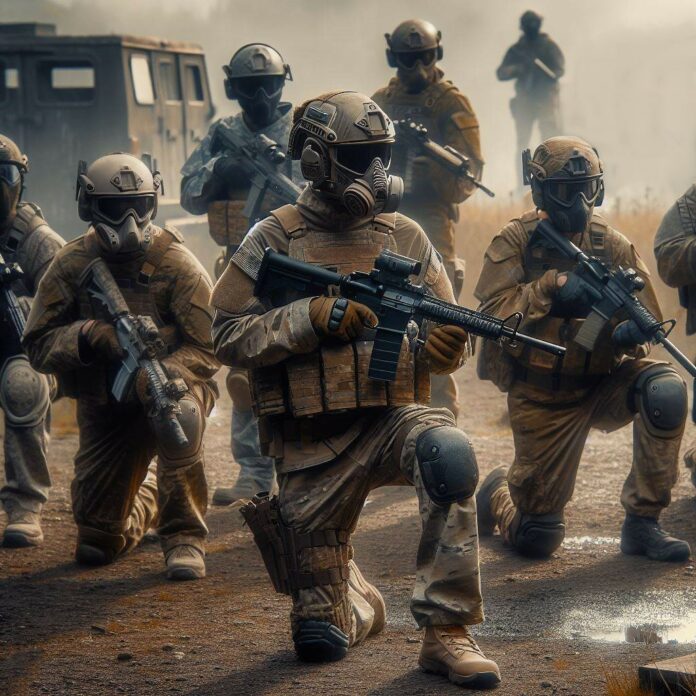Organizing an airsoft tournament involves meticulous planning to ensure a safe and engaging experience for participants. Begin by defining the tournament’s purpose, format, and rules, emphasizing safety guidelines.
What is Airsoft?
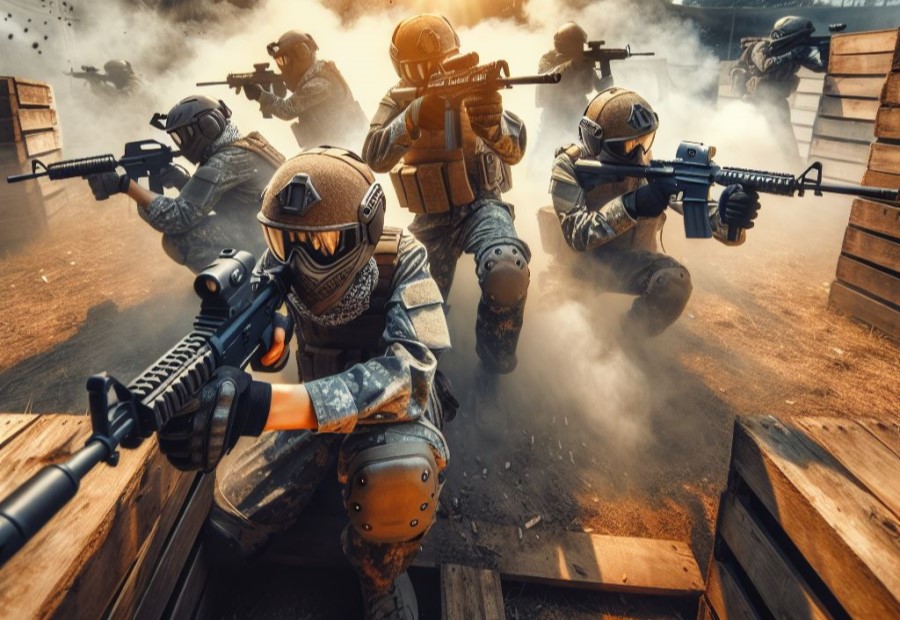
What is an Airsoft Tournament?
An airsoft tournament is a competitive event where participants engage in simulated combat using airsoft guns. It is an adrenaline-pumping sport that replicates military action and tactics in a controlled environment.
During an airsoft tournament, teams or individuals compete against each other in a variety of game formats, such as capture the flag or team deathmatch. Safety guidelines are strictly enforced to ensure a safe playing environment for all participants.
Participants must come prepared with the necessary gear, including protective equipment such as goggles, face masks, and appropriate clothing. The use of airsoft guns must adhere to weapon regulations, which may restrict certain modifications or FPS (feet per second) limits to ensure fairness and safety.
An airsoft tournament requires careful planning and organization. It involves setting a date, securing a venue, and creating a budget. Permits and permissions may be required to host the event, depending on the location.
Promotion and marketing play a crucial role in attracting participants to the tournament. Creating an event page or website, utilizing social media platforms, and partnering with sponsors can help increase awareness and participation.
After the tournament, there is usually an awarding ceremony to recognize outstanding performance. Participant feedback and surveys are collected to gather insights and make improvements for future tournaments.
Preparation and Planning for an Airsoft Tournament
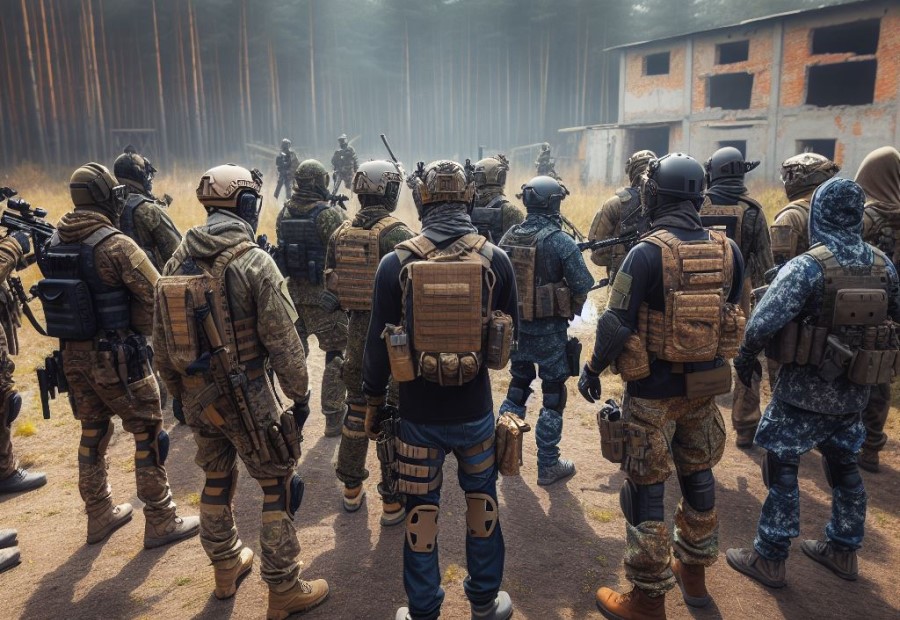
Choosing a Venue
Incorporating all the keywords naturally, choosing a venue for an airsoft tournament is an essential step in ensuring the success of the event. Here are some factors to consider:
- Location: When selecting a venue, it is crucial to choose one that is easily accessible for all participants. Take into account the proximity to major roads or public transportation.
- Size: The size of the venue should be sufficient to accommodate the expected number of teams and participants. It is important to ensure that there is ample space for gameplay and spectator viewing.
- Safety: Ensuring the safety of the participants should be a top priority. Therefore, it is important to choose a venue that provides a safe environment with proper infrastructure and safety measures in place.
- Layout: The layout of the venue should be conducive to the planned airsoft gameplay. Consider the availability of natural obstacles, buildings, and other features that can enhance the overall gameplay experience.
- Amenities: It is necessary to check if the venue provides amenities such as restrooms, parking facilities, and seating areas for both participants and spectators.
- Cost: Considering your budget, it is important to compare the pricing of different venues. Keep in mind that factors like location, amenities, and size will influence the cost.
By carefully evaluating these factors, you will be able to select a venue that meets the specific needs of your airsoft tournament and provides an enjoyable experience for all participants.
Fun Fact: Did you know that airsoft originated in Japan in the 1970s and has since gained popularity worldwide?
Setting a Date and Time
When organizing an airsoft tournament, setting a date and time is a crucial step. Here are some steps to follow:
- Take into account the availability of your target participants and any potential conflicts with other popular airsoft events in your area.
- Conduct research and choose a date that allows for sufficient preparation time.
- Select a time of day that is appropriate for gameplay and ensures there is enough daylight.
- Check if there are any local regulations or restrictions on noise or outdoor activities during specific times.
- Consult with the chosen venue to confirm its availability on the selected date.
- Consider the weather conditions during the chosen period to guarantee optimal gameplay conditions.
- Identify any potential holidays or popular events that may clash with the chosen date and time.
- Create a backup date in case unforeseen circumstances prevent the tournament from happening on the initial date.
- Clearly and effectively communicate the chosen date and time to participants through channels such as the event website, social media, and email.
These steps will ensure that the date and time of the airsoft tournament are well-planned and suitable for all participants.
Creating a Budget
Creating a budget for an airsoft tournament is an essential step in ensuring the event runs smoothly and efficiently. Here is a list of steps to consider:
- Identify all the expenses involved in organizing the tournament, such as field rental fees, equipment rentals, referee fees, prizes, and marketing costs.
- Research and gather quotes from different suppliers and service providers to determine the most cost-effective options.
- Allocate a portion of the budget for unexpected expenses or contingencies to ensure you have enough funds to handle any unforeseen circumstances.
- Consider sponsorship opportunities to help offset costs. Approach local businesses or airsoft equipment manufacturers to see if they are willing to sponsor the event in exchange for publicity or advertising.
- Create a comprehensive spreadsheet or budgeting tool to track all income and expenses related to the tournament.
- Monitor the budget throughout the planning process to ensure you stay within the allocated funds. Make adjustments if necessary to avoid overspending.
- Regularly review and update the budget as new expenses or sponsorships arise.
By carefully creating and managing your budget, you can organize an airsoft tournament that is financially sustainable and successful.
Securing Permits and Permissions
Securing permits and permissions for an airsoft tournament is an important step to ensure the event can be held legally and safely.
- Contact local authorities: Initiate contact with the local government or relevant regulatory agencies to understand any permits or licenses required for organizing the tournament.
- Research venue restrictions: Verify if the selected venue has any specific requirements or constraints for hosting airsoft events, such as noise limitations or environmental concerns.
- Submit permit applications: Fill out and submit all necessary permit applications, supplying any required information and documentation, such as event details, insurance coverage, and safety protocols.
- Pay permit fees: Many permits involve a fee, so ensure proper budgeting and make the necessary payments within the stipulated timeframe.
- Coordinate with landowners: If the tournament is held on private property, acquire written permission from the landowner and clarify any liability or insurance requirements.
- Secure insurance coverage: Assess if insurance coverage is needed or recommended for the event and obtain the appropriate policies to mitigate potential risks.
- Comply with regulations: Ensure that all aspects of the tournament, including game formats, safety guidelines, and equipment regulations, adhere to local laws and regulations.
- Communicate with participants: Clearly communicate any permit or registration requirements to participants and familiarize them with any rules they need to follow to participate in the tournament.
- Coordinate with local authorities: Maintain open communication with local law enforcement and emergency services, providing them with event details and contact information.
Organizing Teams and Participants
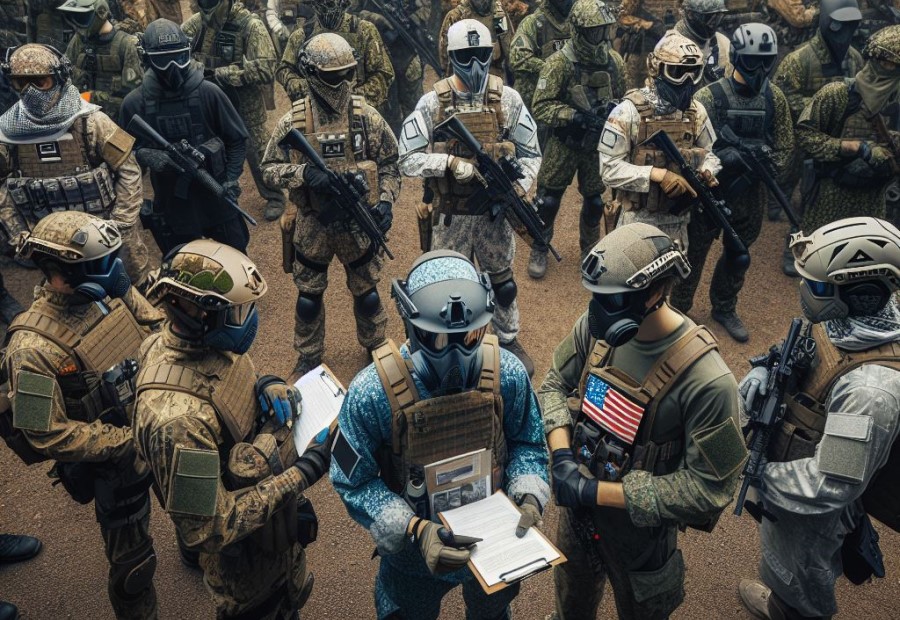
Setting Team Sizes
When it comes to organizing an airsoft tournament, one important aspect to consider is setting team sizes. Here are the steps to follow:
- Assess the size of the venue: Determine the maximum number of players that can comfortably play on the field at the same time. This will help you determine the ideal team sizes.
- Consider game formats: Different game formats may require different team sizes. For example, a standard team deathmatch may have teams of 5-10 players, while a capture the flag game may have teams of 8-12 players.
- Take into account the number of participants: If you have a large number of participants, you may need to divide them into smaller teams to ensure fair gameplay and maximize everyone’s involvement.
- Balance teams: Aim to create balanced teams based on skill levels and experience. Avoid stacking teams with all the skilled players, as it can lead to an unfair advantage.
- Consider logistical factors: Take into account factors such as available equipment, game duration, and field size when determining team sizes. You want to ensure that the teams can effectively navigate the field and complete the objectives.
By following these steps, you can successfully determine the best team sizes for your airsoft tournament. Remember to consider the specific needs and requirements of your event to ensure an enjoyable and competitive experience for all participants.
Registration Process
The registration process for an airsoft tournament involves several steps:
- Announce the registration period: Clearly communicate the start and end dates for registration to potential participants.
- Provide registration instructions: Clearly outline the process and requirements for registration. Include a deadline for submission.
- Collect participant information: Gather necessary information from participants, such as their names, contact details, team affiliations, and any special requests or considerations.
- Ensure payment: Specify the registration fee and provide instructions for payment. Set a deadline for payment submission.
- Confirm registration: Once payment is received, send a confirmation email to participants, acknowledging their successful registration. Include any additional details or instructions.
- Manage participant roster: Keep an updated and organized list of registered participants, including their contact information, team details, and payment status.
- Communicate with participants: Keep participants informed about any updates or changes related to the tournament, such as scheduling or rule revisions.
- Handle cancellations or substitutions: Establish a policy for handling cancellations and substitutions, including refund procedures and necessary documentation.
- Finalize participant list: Once the registration period concludes, close registration and finalize the participant list. Prepare necessary materials for the tournament accordingly.
Team Selection and Composition
When it comes to team selection and composition for an airsoft tournament, several factors need to be considered to ensure a fair and balanced competition.
| Factors to Consider | Description |
|---|---|
| Player Experience | It is important to consider the experience level of players. Teams should have a mix of experienced and novice players to create a balanced playing field. |
| Player Skills | Each player brings their own set of skills and strengths to the team. Consider the different roles and positions within the team, such as snipers, support, and assault, to ensure a well-rounded composition. |
| Team Chemistry | The ability of team members to work together and communicate effectively is crucial. Assess how well players interact and collaborate to build cohesive teams. |
| Playstyle | Different teams may have different playstyles, such as aggressive or defensive. Consider these playstyles when selecting and composing teams to ensure compatibility and strategic gameplay. |
| Available Equipment | Take into account the equipment available to each player when forming teams. Equalize access to gear and weapons to maintain fairness. |
Team selection and composition require careful consideration of player experience, skills, team chemistry, playstyle, and available equipment. By taking these factors into account, organizers can create balanced teams for an exciting and fair airsoft tournament.
Rules and Regulations
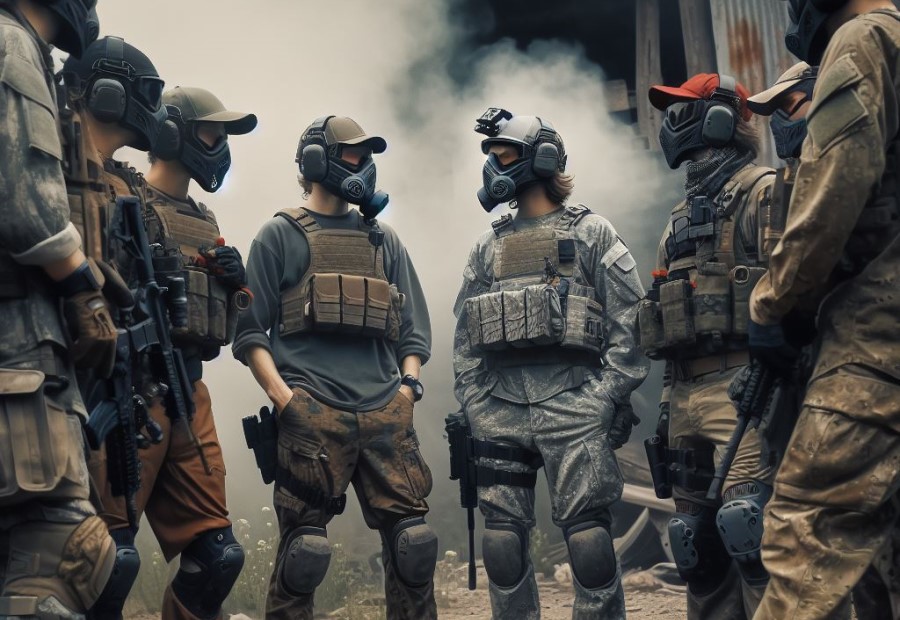
Safety Guidelines
Safety during an airsoft tournament is crucial to ensure a positive and injury-free experience for all participants. Here are some important safety guidelines, or simply put, rules and regulations, to adhere to:
- Wear appropriate protective gear: All participants must wear the necessary and essential protective gear such as eye protection, face masks, and gloves to prevent injuries from BBs.
- Follow weapon regulations: Only use weapons that comply with the tournament’s regulations. This includes having proper barrel covers and not modifying guns to exceed the allowed limits.
- Establish clear boundaries: Set designated and marked safe zones where players can remove their eye protection and interact without the risk of being hit by BBs.
- Prohibit blind firing: Players should always have a clear line of sight and should not shoot without properly aiming at a target.
- Communicate and respect surrender rules: Implement specific rules and regulations regarding surrenders, where players can voluntarily surrender their opponents at close range to avoid unnecessary close-quarter combat and potential injuries.
- Designate a first aid station: Have a dedicated first aid station with trained medical personnel available to provide immediate assistance for any injuries that may occur during the tournament.
- Enforce fair play: Discourage aggressive behavior and ensure that all participants play by the fair play rules to promote a safe and enjoyable airsoft experience.
By following these safety guidelines, organizers can create a secure environment for participants and minimize the risk of accidents or injuries during the airsoft tournament.
Game Formats
When it comes to organizing an airsoft tournament, one crucial aspect is determining the game formats. Incorporating various game formats can add excitement and diversity to the competition. Below, you will find a table summarizing some common game formats:
| Game Format | Description |
|---|---|
| Team Deathmatch | A classic airsoft game where two or more teams compete to eliminate players from the opposing team. The team with the most remaining players at the end wins. |
| Capture the Flag | Teams aim to capture the opponent’s flag from their base and bring it back to their own base while defending their own flag. The team that successfully captures the flag wins. |
| Domination | Teams compete to control and defend specific areas of the playing field. Points or time limits are used to determine the winning team. |
| Search and Destroy | One team plays the attackers while the other defends an objective. The attacking team must find and neutralize the objective while the defending team aims to prevent them from doing so. |
| King of the Hill | Teams battle for control over a designated area. The team that maintains control of the area for the longest duration wins. |
These game formats provide different challenges and strategies, ensuring an engaging and diverse airsoft tournament.
Organizers can choose the most appropriate formats based on factors such as the number of participants, available resources, and desired gameplay experience.
Scoring System
The scoring system is a crucial aspect of an airsoft tournament as it determines the winners and the overall success of the event. The table below illustrates the components of a typical scoring system used in airsoft tournaments:
| Scoring Categories | Points |
|---|---|
| Eliminations | +50 |
| Teamwork | +25 |
| Objectives | +100 |
| Hits Taken | -10 |
In the scoring system, each category carries a certain number of points that are awarded or deducted based on gameplay performance.
Eliminations, where players successfully eliminate opponents, contribute 50 points to the team’s score. Teamwork is rewarded with 25 points, emphasizing the importance of collaboration among team members.
Completing objectives, such as capturing specific areas or retrieving objects, is worth a significant 100 points, pushing teams to focus on strategic gameplay.
On the other hand, hits taken, indicating how many times a player has been hit, result in a deduction of 10 points.
To ensure a fair and balanced scoring system, it is essential to clearly communicate the rules and criteria to all participants before the tournament begins. Organizers should also have certified referees to oversee and track the scores accurately.
To enhance the experience and competitiveness of the tournament, organizers can consider implementing additional scoring categories that align with the specific objectives and game format.
This allows for a more comprehensive evaluation of gameplay and encourages participants to strategize and perform effectively.
Equipment and Gear
When organizing an airsoft tournament, it is crucial to have the right equipment and gear for participants. The table below outlines the required gear for participants:
| Gear | Description |
|---|---|
| Protective Eyewear | Participants must wear ANSI-rated goggles or glasses to protect their eyes from potential injuries. |
| Protective Face Mask | A face mask or mesh that covers the participant’s face is necessary to protect against facial injuries. |
| Airsoft Gun | Each participant should have a functioning airsoft gun that meets the established weapon regulations. |
| BBs | Plastic pellets, known as BBs, are used as ammunition. Participants must bring an adequate supply of BBs for their gameplay. |
| Extra Batteries | Participants using electric airsoft guns should carry spare batteries to ensure uninterrupted gameplay. |
It is important to ensure that participants have the necessary equipment and gear to maintain a safe and fair playing environment.
The equipment and gear listed above will help protect participants from potential injuries and ensure the airsoft guns are in compliance with the rules and regulations of the tournament.
Additionally, it is recommended to have a dedicated area for gear and equipment rentals. This allows participants who do not have their own equipment to still participate in the tournament.
Providing rental gear options cultivates inclusivity and encourages more players to join.
Required Gear for Participants
The required gear for participants in an airsoft tournament includes:
- Protective eyewear: Participants must wear impact-rated goggles or face shields to protect their eyes from potential injuries.
- Head protection: It is essential to wear a helmet or a hat to provide head protection against accidental hits.
- Protective face mask: A face mask is necessary to protect the face from BB hits and potential injuries.
- Camouflage clothing: Participants should wear camouflage clothing to blend in with the playing environment and avoid being easily spotted.
- Tactical vests or plate carriers: These are used to carry extra ammunition, spare magazines, and other necessary equipment.
- Airsoft gun: Participants need to have their own airsoft guns that comply with the tournament’s weapon regulations.
- Ammunition and magazines: Sufficient BBs and spare magazines are required to ensure continuous gameplay.
- Boots or sturdy footwear: Participants should wear boots or sturdy footwear to protect their feet and provide stability during the game.
- Communication devices: Walkie-talkies or communication systems are recommended for effective team communication during the tournament.
Remember, it is important to familiarize yourself with the specific rules and regulations of the airsoft tournament you are participating in to ensure compliance with gear requirements.
Always prioritize safety and wear proper protective gear to prevent injuries during gameplay.
Weapon Regulations
When it comes to organizing an airsoft tournament, weapon regulations are of utmost importance in ensuring the safety and fairness of the event. Here are some key considerations:
- All participants must follow the weapon regulations specified by the tournament organizers.
- Participants are required to wear appropriate protective gear, such as goggles or face masks, for injury prevention.
- The weapons used in the tournament must adhere to the designated safety guidelines to minimize the risk of accidents and harm.
- Specific weapon regulations may impose restrictions on modifications or enhancements to maintain fairness among players.
- The tournament organizers may also set limits on firing rate or ammunition capacity to ensure fairness and safety.
It is essential for participants to familiarize themselves with the weapon regulations to avoid disqualification and ensure compliance throughout the tournament. Adhering to these regulations creates a safe and enjoyable environment for all players involved.
Gear and Equipment Rentals
When organizing an airsoft tournament, incorporating gear and equipment rentals can greatly benefit participants. Here are some important factors to keep in mind regarding gear and equipment rentals:
- Rental availability: It is crucial to ensure that there is a plentiful supply of gear and equipment available for rent. Collaborating with rental companies or individuals who offer a diverse range of options can be helpful.
- Rental rates: Determining the cost of renting gear and equipment is essential. Offering competitive pricing will attract participants and ensure affordability.
- Rental policies: It is important to establish clear rental policies, including rental duration, return procedures, and liability agreements. This will help manage expectations and avoid any misunderstandings.
- Quality and condition: Prioritizing the safety and satisfaction of participants, it is essential to inspect the rented gear and equipment to ensure they are in good working condition and meet safety standards.
- Additional charges: Communicating any additional charges associated with gear and equipment rentals, such as late fees or damages, will help participants understand their responsibilities and avoid any unexpected costs.
- Reservation process: Setting up a streamlined reservation process allows participants to secure their rental gear and equipment in advance. This will help organizers manage inventory and ensure that everyone is adequately equipped on tournament day.
By considering these factors, organizers can provide participants with convenient and reliable gear and equipment rentals, enhancing their overall tournament experience.
Tournament Logistics
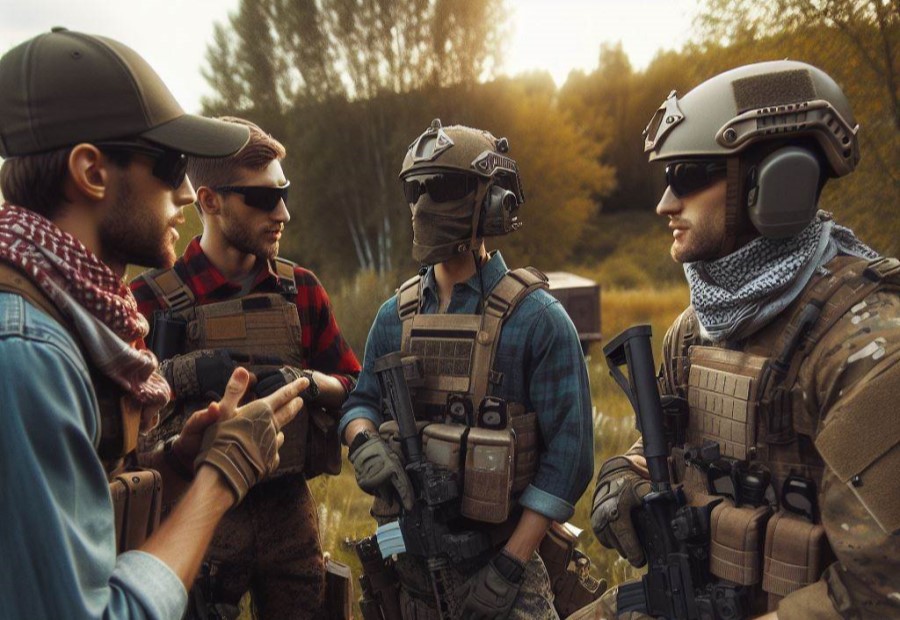
Game Officials and Referees
Game Officials and Referees play a vital role in ensuring fair and safe play during an airsoft tournament. They are responsible for enforcing the rules and regulations of the tournament, ensuring that all participants adhere to the safety guidelines and game formats.
These officials prioritize the safety of all participants by monitoring the players’ actions, equipment, and gear. Their presence helps prevent accidents and injuries during gameplay.
In addition to safety oversight, Game Officials and Referees also make decisions on disputed calls or situations during the games. They have the final say in resolving conflicts or disagreements between teams or players.
Furthermore, Game Officials and Referees manage the flow and progression of the tournament. They time the matches, ensure fairness in team compositions, and maintain order on the field.
Game Officials and Referees possess expert knowledge of the sport. They have a deep understanding of the game rules, scoring systems, and the proper use of equipment. This expertise allows them to provide guidance and support to participants.
It is crucial for Game Officials and Referees to maintain impartiality and neutrality throughout the tournament. They do not show favoritism towards any team or player, ensuring a fair and competitive environment for all participants.
Moreover, these officials undergo officiating training to enhance their skills and knowledge. They stay updated on any changes in rules and regulations, ensuring consistent and accurate officiating.
Game Schedule and Timings
Having a well-planned game schedule and adhering to the timings helps maintain the smooth flow of the tournament and ensures that all participants have a fair and enjoyable experience.
Game Schedule and Timings are crucial aspects of organizing an airsoft tournament.
| Setting Game Date and Time | Choose a suitable date and time for the tournament, taking into consideration factors such as availability of participants and venue. |
| Planning Game Schedule | Create a detailed schedule for the tournament, including the start and end times of each game, breaks, and any additional activities or events. |
| Communicating Schedule to Participants | Ensure that all participants are aware of the game schedule by sending out timely notifications through email or a dedicated tournament website. |
| Flexibility in Timings | Allow for flexibility in the game schedule to accommodate unexpected delays or adjustments that may arise during the tournament. |
Field Setup and Design
- Clear the field: Before setting up the airsoft tournament field, ensure that it is free from any debris, obstacles, or hazardous materials. This will create a safe playing environment for participants.
- Define boundaries: Use boundary markers or tape to clearly establish the limits of the playing area. This will prevent players from wandering outside the designated field.
- Create cover and obstacles: Strategically place barriers, walls, and other objects to provide cover for players and create a dynamic playing experience. These obstacles can include wooden pallets, barrels, or inflatable structures.
- Position respawn areas: Determine the locations of respawn areas where players can re-enter the game after being eliminated. These areas should be strategically placed to ensure balanced gameplay.
- Consider the terrain: Take into account the natural terrain features of the field, such as hills, trees, or buildings. Utilize these features to enhance the gameplay and create tactical advantages for players.
- Add props and structures: Incorporate props such as flags, bombs, or objectives to add an extra layer of gameplay. These props can be used to create specific missions or objectives for teams to complete.
- Ensure player safety: Install safety netting or fencing around the field to prevent stray projectiles from leaving the area. Additionally, place clear signage indicating potential hazards and safety rules.
By following these steps, you can create a well-designed and engaging airsoft tournament field that will provide an exciting experience for participants.
Promotion and Marketing
Promoting and marketing your airsoft tournament can make all the difference in its success.
From creating an appealing event page or website to leveraging social media and partnering with sponsors, each of these aspects will equip you with the tools to attract both participants and spectators.
Creating an Event Page or Website
When planning an airsoft tournament, it is crucial to create an event page or website that incorporates important information to attract participants. To ensure success, consider the following:
- Design and layout: One of the key factors in attracting attention is a visually appealing and user-friendly website or event page. Use clear headings and sections to organize the necessary information.
- Event details: Make sure to include the tournament date, time, location, and any other important specifics. This information allows participants to plan and prepare accordingly.
- Registration process: It is important to provide a clear and easy-to-use registration form on your website. Include fields for participant details, team selection, and any required documentation.
- Rules and regulations: To ensure that participants understand and can properly prepare, make sure to clearly state the tournament rules, safety guidelines, and equipment regulations.
- FAQ section: Save time and provide clarity by including a frequently asked questions section to address common queries participants may have.
- Contact information: Clearly display your contact information so participants can easily reach out with any questions or concerns they may have.
- Photos and videos: Generate excitement and give participants an idea of what to expect by including high-quality images and videos from previous tournaments.
- Social media integration: Link your event page or website to your social media platforms to make it easy for participants to share and promote.
- Sponsorship and partners: Showcase any sponsors or partners on the event page or website to demonstrate support for the tournament and add credibility.
Social Media Promotion
When it comes to promoting an airsoft tournament, utilizing social media platforms for social media promotion can be highly effective in reaching a wider audience and creating buzz around the event.
Here are some key strategies for successful social media promotion:
- Create engaging content: Regularly post updates, announcements, and behind-the-scenes photos and videos to keep followers excited about the tournament. Use hashtags to increase reach and visibility.
- Engage with the community: Encourage participants and fans to share their experiences and use the tournament’s designated hashtags. Respond to comments and messages promptly to build a sense of community and foster enthusiasm.
- Collaborate with influencers: Identify popular influencers or airsoft enthusiasts in your target demographic and collaborate with them to promote the tournament. They can share posts, create content, or even attend the event, thereby amplifying its reach to their followers.
- Run social media contests: Host giveaways or contests exclusively on social media platforms to incentivize engagement and attract new followers. Offering tournament merchandise or discounted entry tickets as prizes can generate excitement and encourage sharing.
- Invest in paid advertising: Utilize targeted social media advertisements to reach a broader audience beyond your current followers. Custom audience targeting options allow you to narrow down your reach based on location, interests, and demographics.
Remember, social media promotion is not just about broadcasting information, but also engaging with the community and building anticipation.
By implementing these strategies effectively, you can maximize the reach and impact of your airsoft tournament through social media platforms.
Partnering with Sponsors
When organizing an airsoft tournament, partnering with sponsors can greatly enhance the event and provide support. Here are some important considerations when partnering with sponsors:
- Identify Potential Sponsors: Research and identify companies or organizations that align with the airsoft community and are likely to be interested in sponsoring the tournament.
- Pitch the Benefits: Clearly communicate the advantages of partnering with sponsors for the tournament, such as exposure to a targeted audience, brand visibility, and the opportunity to align with a popular and exciting sport.
- Create Sponsorship Packages: Develop different sponsorship levels with specific benefits and corresponding costs. These packages can include options such as logo placement, naming rights to specific parts of the tournament, or product giveaways.
- Build Relationships: Reach out to potential sponsors and establish personal connections. Explain why their brand is a good fit for the tournament and how the partnership can be mutually beneficial.
- Negotiate Terms: Once a sponsor shows interest, conduct negotiations to finalize the sponsorship details. Clarify expectations, deliverables, and any financial contributions or in-kind donations that the sponsor is willing to provide.
- Provide Value: Ensure that sponsors receive the agreed-upon benefits and recognition during the tournament. Display their logos prominently, mention them in promotional materials, and publicly thank them for their support.
- Follow Up: After the tournament, send thank-you notes to sponsors and provide them with a report on the event’s success. Offer opportunities for future collaborations or continued partnerships.
Post-Tournament Activities
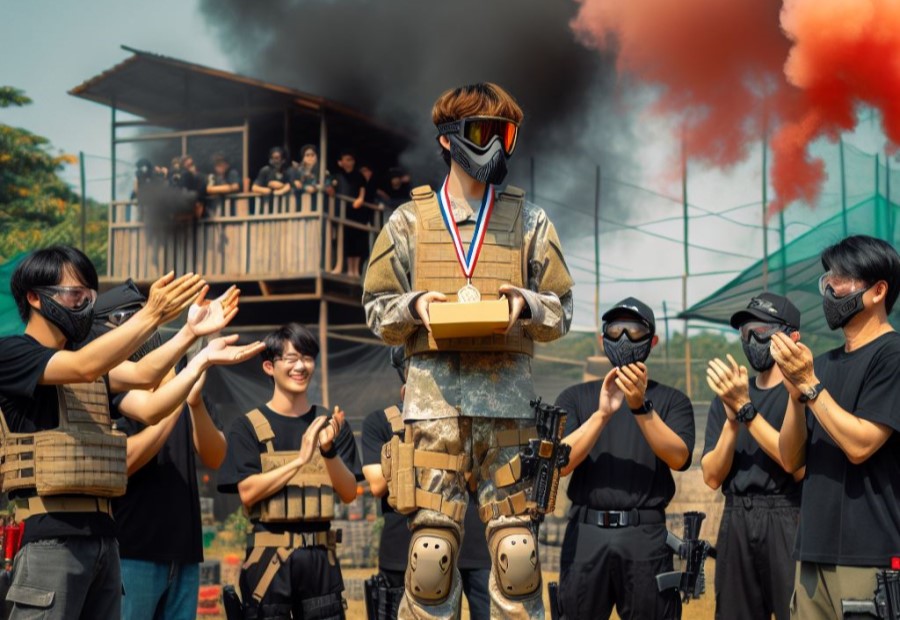
After the exhilarating airsoft tournament comes to an end, it’s time to shift our focus to the post-tournament activities.
Awarding Ceremony
The awarding ceremony is a significant part of an airsoft tournament, providing recognition and celebration for the participants’ achievements. During the awarding ceremony, the following activities take place:
- Announcing winners: The organizers announce the winners of the tournament in each category, such as the overall team champion, individual performance awards, and special categories like best sportsmanship or most valuable player.
- Presentation of trophies: The winners are presented with trophies or awards to commemorate their success. These trophies can be customized with the tournament logo or the winners’ names to add a personal touch.
- Medal distribution: Participants who performed exceptionally well or achieved certain milestones receive medals. These medals can serve as a memento for their accomplishments during the tournament.
- Recognition speeches: The organizers and officials may give recognition speeches to praise the participants’ efforts and highlight outstanding performances. These speeches create a sense of pride and motivate participants to continue improving.
- Group photos: To capture the memories of the tournament, a group photo session is held where all the participants, winners, and organizers gather for a picture. This allows everyone to capture the camaraderie and team spirit of the event.
The awarding ceremony not only creates a memorable experience for the participants but also fosters a sense of community and healthy competition within the airsoft community.
It is a time to celebrate achievements, acknowledge hard work, and inspire future participants to strive for excellence in their airsoft journey.
Participant Feedback and Surveys
When organizing an airsoft tournament, participant feedback and surveys are crucial for assessing the success of the event and gathering valuable insights for future improvements. Here are some key considerations:
- Survey design: Create a well-structured survey to gather feedback on various aspects of the tournament, such as gameplay experience, organization, safety measures, and overall satisfaction.
- Distribution: Ensure that all participants receive the survey promptly after the tournament. Utilize email, digital platforms, or physical forms depending on the preferences and convenience of the participants.
- Open-ended questions: Include open-ended questions to allow participants to provide detailed feedback and suggestions. This qualitative information can offer valuable insights into specific areas that need improvement.
- Ratings and rankings: Implement rating scales or ranking systems for specific aspects of the tournament, such as venue, game format, referees, and equipment. This quantitative data can provide a clear understanding of areas of strengths and weaknesses.
- Anonymity: Assure participants that their feedback will remain anonymous to encourage honest and unbiased responses. This anonymity fosters a safe environment for participants to express their opinions freely.
Suggestions for future improvements:
- Consider the feedback and suggestions provided by participants and incorporate them into the planning and execution of future tournaments.
- Identify trends and common themes in the feedback to address recurring issues and further enhance the overall tournament experience.
- Regularly communicate with participants and provide updates on how their feedback has been used to improve subsequent tournaments. This demonstrates a commitment to continuous improvement and values the input of participants.
By actively seeking participant feedback and conducting surveys, organizers can gain valuable insights to make informed decisions and deliver a better airsoft tournament experience for all participants.
Tournament Analysis and Improvements
When it comes to organizing a tournament, the analysis and improvements are crucial for identifying areas of improvement and making necessary adjustments for future events.
Here are some key aspects to consider in the tournament analysis and improvements:
- Evaluate participant feedback and surveys: Collect feedback from the teams and individual participants to gain insights into their experience of the tournament. This feedback can help identify areas that need improvement or modification.
- Analyze game statistics and scoring: Review the game statistics and scoring system to identify any anomalies or issues that may have affected the fairness or accuracy of the results. Adjustments can be made to ensure a more balanced and enjoyable gameplay.
- Review safety guidelines and incident reports: Assess any incidents or accidents that occurred during the tournament and evaluate the effectiveness of the safety guidelines. Identify any areas where safety protocols can be enhanced to reduce potential risks.
- Assess field setup and design: Analyze the layout and design of the playing field to determine if any changes could enhance the gameplay experience. Consider factors such as obstacles, cover, and overall strategic elements.
- Evaluate game schedule and timings: Review the schedule and timings of the tournament to ensure efficient and smooth operation. Analyze if any adjustments are necessary to optimize the flow of games and minimize waiting times.
- Identify equipment and gear improvements: Assess the gear and equipment used in the tournament and consider any upgrades or changes that could enhance the gameplay or player experience. This could include providing better rental options or addressing any issues with weapon regulations.
Pro-tip: Regularly communicate with participants, collect their feedback, and implement improvements based on their suggestions. This will not only enhance the overall tournament experience but also build a stronger relationship with the community.
Frequently Asked Questions
What are the essential rules to follow when organizing an airsoft tournament?
When organizing an airsoft tournament, it is important to follow certain rules to ensure safety and fairness.
Some essential rules include wearing a mask at all times on the battlefield, using the Honor System and calling hits, reporting cheaters to a referee, and refraining from blind firing or altering obstacles.
Referees have the final say, and physical contact or foul language is not allowed. These are just a few of the rules that should be followed to ensure a successful and enjoyable tournament.
How can I choose the best terrain for an airsoft tournament?
Choosing the right terrain is crucial for an airsoft tournament. Look for a large backyard or abandoned shack that provides ample space and cover for players.
Digging trenches and fox holes, as well as stacking up tires, barrels, tables, and sandbags, can provide additional cover. Natural hiding spots like trees or small bushes can also be utilized.
It is important to ensure that the area is free of animals for safety purposes. By considering these factors, you can create an exciting and challenging environment for your tournament.
What are some tips for creating game scenarios in an airsoft tournament?
Creating engaging game scenarios is key to a successful airsoft tournament. Think about objectives that can be marked clearly with smoke, paint, stickers, or any creative method.
Consider using military-style objectives and implementing different landmarks for effective communication. You can also set up specialized airsoft fields with unique features to add variety and excitement to the games.
By planning and designing game scenarios thoughtfully, you can provide players with thrilling and intense experiences in your tournament.
How can I make game items for an airsoft tournament?
Making game items is an important aspect of organizing an airsoft tournament. Look for scrap materials such as old barrels or wood to create bunkers and obstacles.
Additionally, consider installing accessories like painted emblems or signage to enhance the gaming experience. It is crucial to ensure that all game items are safe and will not pose any risks to the players.
By utilizing creativity and resourcefulness, you can make game items that add excitement and challenges to your airsoft tournament.
What are some important steps to take for a smooth airsoft tournament?
To ensure a smooth airsoft tournament, it is important to follow certain steps. These include conducting personal safety equipment, magazine, and ammunition checks, as well as enforcing the rules of play outlined by the Briefing Referee
. Start and end play periods should be clearly indicated by game officials, and players should be ready to play again as soon as they are eliminated, or the game period is over.
It is also crucial to listen to all battlefield referees and show respect for all players. By following these steps, you can create a well-organized and enjoyable airsoft tournament experience.
What are the legal and administrative considerations when organizing an airsoft tournament?
Organizing an airsoft tournament involves legal and administrative considerations. It is advisable to form a legal entity, such as an LLC, to protect personal liability.
Additionally, registering for taxes, obtaining necessary permits and licenses, and getting business insurance, such as general liability and workers’ compensation, are essential steps to operate legally.
Creating a business website, setting up a business phone system, and defining your brand can also help in promoting and managing the tournament effectively.
By addressing these legal and administrative aspects, you can ensure a successful and compliant airsoft tournament.

